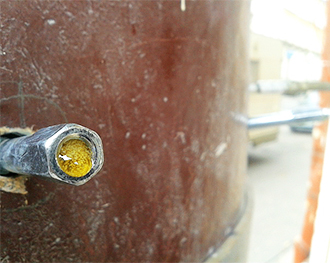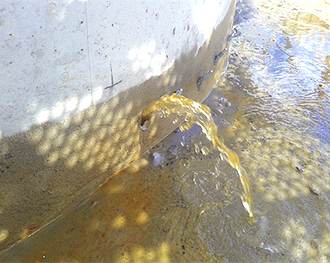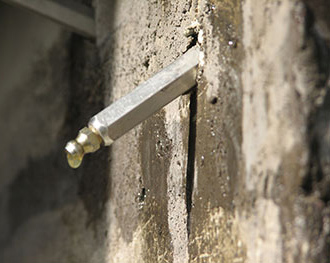- hard-elastic sealing and filling of cracks, fractures, joints and construction joints in construction engineering and underground structures in dry, moist and wet conditions as well as in the presence of water under pressure
- sealing and strengthening joints and fractures in building structures
- executing horizontal barriers in masonry structures
- sealing expansion joints and other joints in structures
- sealing diaphragm walls, sheet pile walls, pile retaining walls under the pressure of ground water
- sealing cracks and fractures in tanks
- sealing pipe penetrations and pipe sleeves
- sealing and structural injection of contact zones between sealing tapes and concrete
- curtain injection – sealing on the external side of underground structure, between the structure and soil
- low-pressure injection to achieve elastic filling of cracks and microcracks in dry and wet concrete,
- filling porous concrete of low density – structural injection,
- filling voids and cavities in building structures or between the structure and soil,
- filling volumes between old and new pipe lining, screw turbines of hydropower plants etc.
What is injection?
Injection is a procedure of introducing a pumpable medium (injection material) into a given environment with the aim of sealing or strengthening this environment by achieving specific parameters of the injection material after its curing/hardening. One can distinguish between low-, medium- and high-pressure injection. Such a method involves pumping an adequately selected injection material under pressure through previously drilled injection holes. Injection is a non-invasive technology, which allows for elimination of causes and results of the encountered problem without the need to dismantle elements of the treated building structures, or to perform complicated and laborious earth works, or to put the repaired structure out of operation.
The following types of injection techniques applied in construction industry can be distinguished:
- gravity-fed injection: empty spaces, caverns, impregnation of porous building structures;
- waterproofing pressure injection: cracks, fractures, joints, cold joints;
- strengthening/sealing pressure injection: cracks, fractures, joints, cold joints;
- structural injection: structural waterproofing/strengthening of the structure;
- curtain injection: trenchless renovation of existing horizontal and vertical waterproofing systems;
Technical data sheet of the service
|
| SITE |
all branches of construction industry, in particular underground parts of building structures exposed to the pressure of groundwater and rainwater |
| COMPLETION TIME |
adjusted to the schedule and the expectations of the investor, dependent on the complexity of works |
| MATERIAL |
mineral injection materials, synthetic injection materials, one- and multicomponent materials, elastic injection materials, rigid injection materials, injection materials of long curing time, fast-setting injection materials, high- and low-viscosity injection materials |
| TECHNOLOGY |
High-pressure injection, low-pressure injection, gravity-fed injection, waterproofing injection, strengthening injection, sealing injection, curtain injection, structural injection, injection into crack, injection of foundations, execution of horizontal barrier in walls, filling voids, waterproofing expansion joints |
| ADVANTAGES |
protection, repair and waterproofing of building structures without the need to get full access to the structure, to forge it or dismantle/demolish it, very good penetration of substrate, very high compressive and tensile strength of the treated joints, substantial acceleration of the works, decreasing the cost of repair, limiting inconveniences caused by the performed repairs/renovations, long-term guarantee of effectiveness, effectiveness tests, expert opinions on the condition of structures before working design |
CHECK OUR PROJECTSCONTACT US



